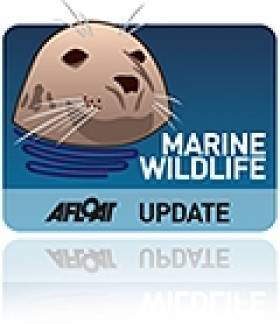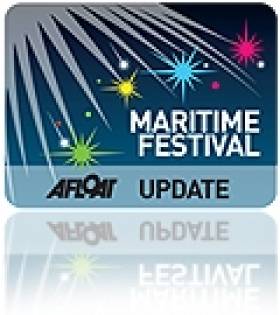Displaying items by tag: National Marine Week
Humpback Whales Liven Up NI's National Marine Week
#MarineWildlife - Northern Ireland's National Marine Week kicks off today (Saturday 26 July) with a 'rockpool ramble' at Groomsport in Co Down, the first in a series of marine wildlife themed events around the coast till 10 August.
Ulster Wildlife’s Living Seas staff and volunteers will be sharing their knowledge and expertise to help everyone find out more about the wonderfully varied wildlife found under our coastal waters, from tiny corals and shoals of gleaming fish, to playful seals and massive basking sharks, the world’s second largest fish.
“Many people see the sea simply as a huge expanse of water, but under the surface is a treasure trove of hidden gems, which we depend upon in so many ways," said Jade Berman, Living Seas manager with Ulster Wildlife.
“National Marine Week offers everyone the opportunity to find more to enjoy, more to learn and more to value in the fantastic marine life around our shores. Once they know what’s out there, we have no doubt that many more people will want to see our marine habitats and wildlife properly protected.”
One of the highlights this year is the Whale Workshop roadshow, which stops at Foyleside Shopping Centre for three days from tomorrow (Sunday 27 July) before moving to the Quays Shopping Centre in Newry from 1-4 August.
The Whale Workshop, which has toured internationally, lets the public get up close with life-size replicas of species such as dolphins, porpoise, seals, leatherback turtles, the aforementioned basking shark – and even a minke whale.
A complete list of events for National Marine Week can be found HERE – and if you're lucky, you might catch a glimpse of one of two humpback whales sighted off the Co Down coast in recent days.
According to the Belfast Telegraph, the first of these sightings last Sunday 20 July was only the fifth record of this species in the Irish Sea in 100 years.
A second spotting of that distinctive tail near the Copeland Islands was compared to the first by the Irish Whale and Dolphin Group's (IWDG) Padraig Whooley, who is "fairly confident" they are two different whales, according to his colleague Ian Enlander.
Whooley has much more in a detailed article on the IWDG website HERE.
National Marine Week Kicks Off in Northern Ireland
#MARITIME FESTIVALS - National Marine Week has kicked off in Northern Ireland, with events taking place along the coastline till Sunday 12 August.
According to BBC News, events organised by the Ulster Wildlife Trust for the festival fortnight include a ramble on the shore of Carlingford Lough, rummaging in rock pools in Portrush, Co Antrim and Annalong, Co Down, and a coastal walk along Belfast Lough as previously reported on Afloat.ie.
There will also be a survey of the coastline's plants and wildlife considered the best indicators of climate change as part of the UK-wide Shore Thing Project.
"National Marine Week is the perfect opportunity for people to get out and explore the seaside and experience for themselves the diversity of wildlife that our seas and shores have to offer," said the Ulster Wildlife Trust's Kerri Whiteside.
"As well as being lots of fun, we hope our events will help everyone to understand the importance of protecting our vital marine habitats for the future, and inspire people to join us on our journey towards living seas, where wildlife thrives from the depths of the oceans, to the coastal shallows."































































